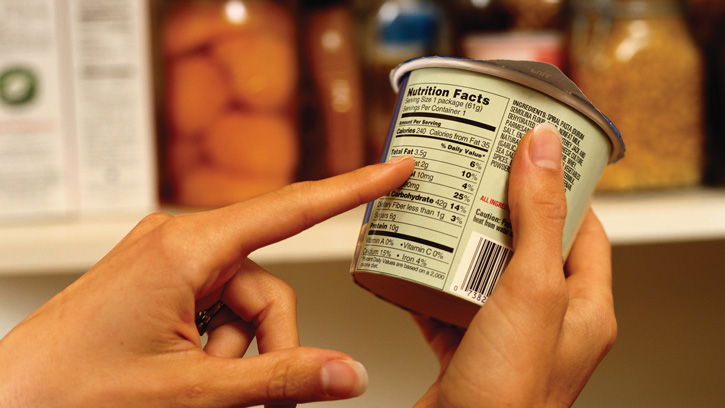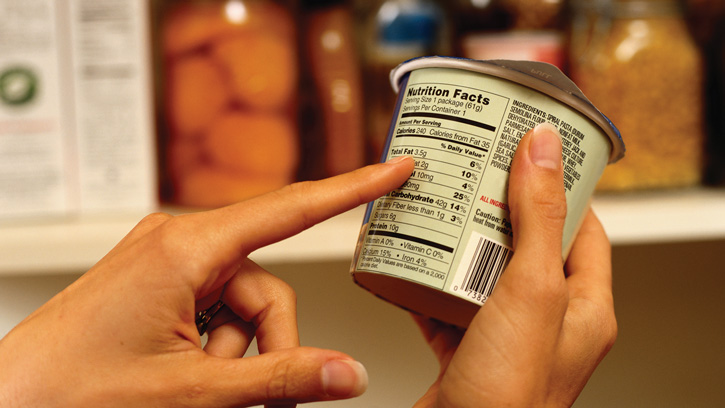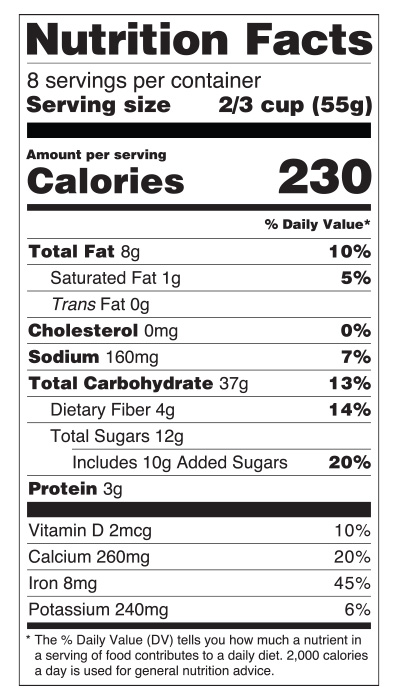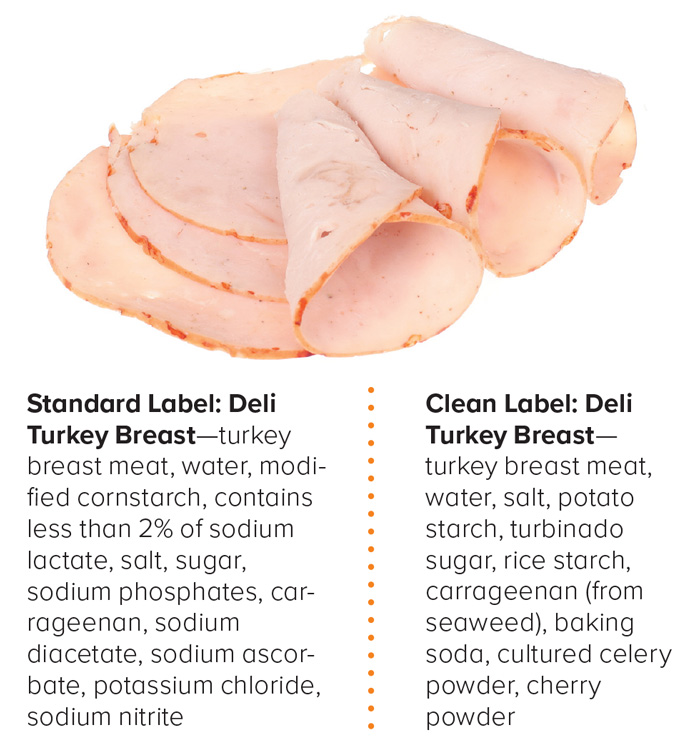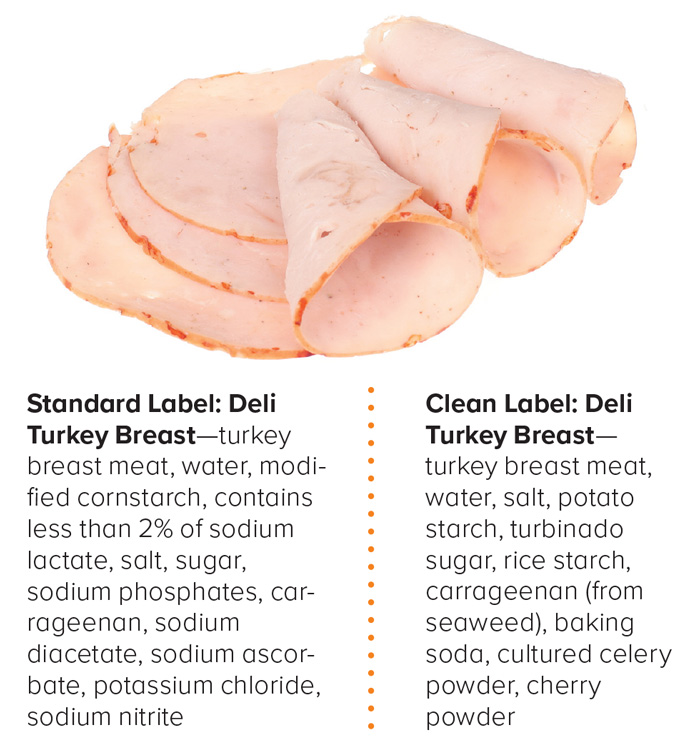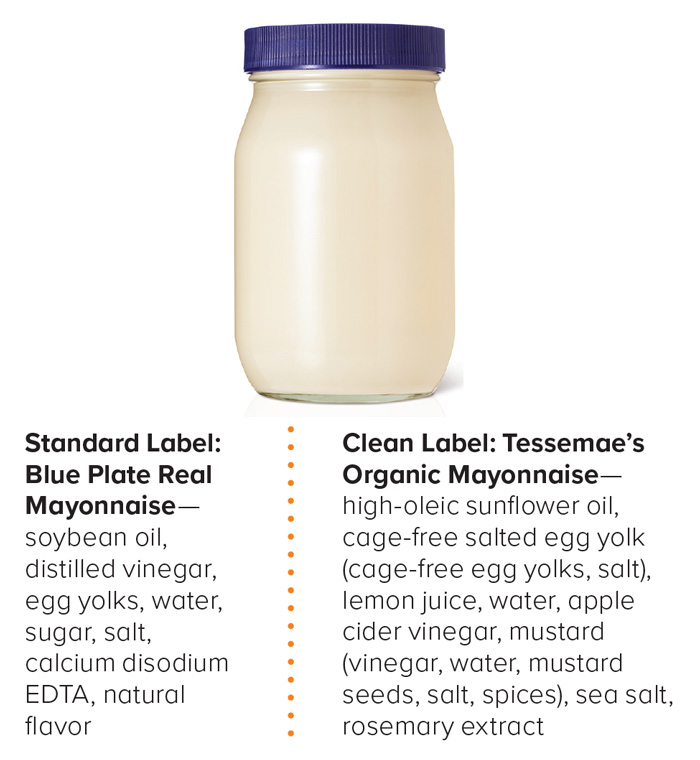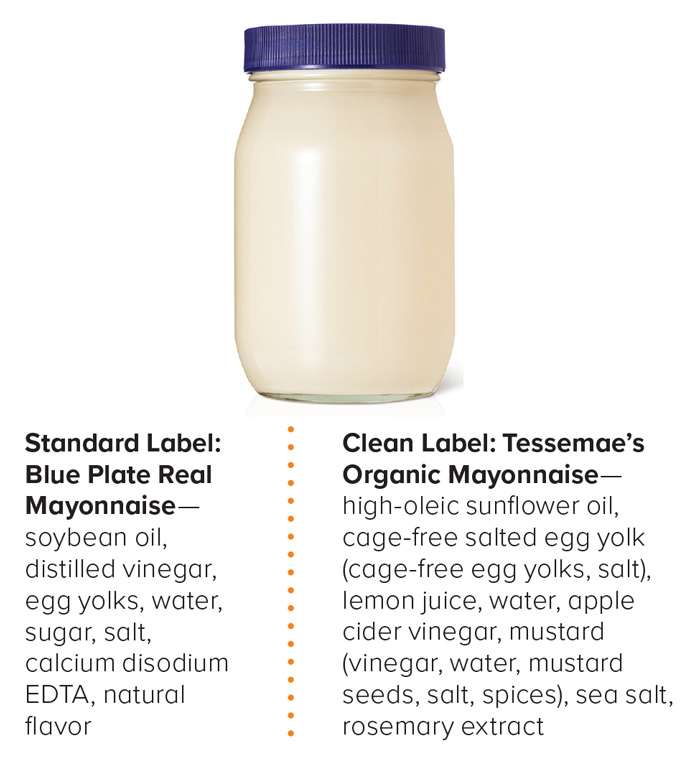Anatomy of an Ingredient Label
Ingredients | APPLIED SCIENCE
Ingredient labels are an important tool for increasingly conscientious food and beverage shoppers.When looking at front-of-panel labels on products, consumers always or often consider the Nutrition Facts highlights (45%) and ingredient-specific labels identifying ingredients that are included or excluded (41%), according to the International Food Information Council. Simple, recognizable ingredients influence the purchasing decisions of 69% of consumers, while 66% say they are looking for labels with the shortest ingredients list, reports ADM Outside Voice research.
Different items, such as dietary supplements, require different labeling procedures, but most food product labels display six general components: principal display panel, information panel, Nutrition Facts, ingredients panel, manufacturer information, and net quantity of product. Let’s take a closer look at each one.
1) Principal Display Panel (21 CFR § 101.1)
The principal display panel is the part of the label commonly seen by the consumer on retail shelves.
2) Information Panel (21 CFR § 101.2)
This part of a food package states all the required information, such as nutrition data and ingredients. The information panel will be on the right side of the container unless that package area is too small (such as a bag of chips or a candy bar) or unusable (ends or flaps), or the top of the container is the only viable spot for printing. Not all required information on a food label has to be on the information panel, however. Net weight, for example, is commonly located on the principal display panel.
3) Nutrition Facts (21 CFR § 101.9)
The Nutrition Facts section of the label has nine components required by the Food and Drug Administration (FDA): serving size, calories, total fat (trans and saturated), cholesterol, sodium, total carbohydrates (dietary fiber, total sugars, added sugars), protein, vitamins and minerals, and the percentage of daily value (DV) for each of these components in the food product (excluding serving size and calories). The FDA provides resources for calculating the caloric content of foods.
A manufacturer also can voluntarily include a number of other listings, such as sugar alcohol, fluoride, and soluble fiber.
4) Ingredients Panel (21 CFR § 101.4)
In general, ingredients are listed in descending order of weight, except for those that make up 2% or less of the product. Often an ingredient itself contains two or more ingredients. If so, these components are subingredients and must either be listed in parentheses after the ingredient or by themselves without the ingredient name, such as fully hydrogenated vegetable oils (rapeseed and soybean) in Jif Creamy Peanut Butter.
5) Manufacturer Information (21 CFR § 101.5)
The regulation for the manufacturer, packer, or distributor declaration requires a conspicuous listing of the name, street address, city, state, and zip code (with exceptions) of the location of the manufacturer, packer, or distributor. The U.S. Department of Agriculture requires a mark of inspection alongside the establishment number for where the food was produced (such as with meat products). The FDA requires that the manufacturer state only the principal place of business where the food company operates (not necessarily the actual processing facility).
6) Net Quantity of Product (21 CFR § 101.7)
Manufacturers are required to express the amount of food present within the package by weight, measure, numerical count, or numerical count with weight or measure. If the food is liquid, the measurement must be in terms of fluid measure. If the food is solid, the measurement must be in terms of weight or dry measurement.
Various exceptions and rules apply depending on the size of package, the size of food product, and the type of food (pickles, relish, semi-solid, and hygroscopic foods).
Side by Side: Standard and Clean Ingredients Panels
Many food companies are shifting to so-called clean labels due to consumer demand. While there is no formal definition for the term, clean label consumers generally say they want to see shorter ingredient lists and easily recognizable ingredients.
Here’s how standard labels and clean labels differ for two common products: deli turkey breast and mayonnaise.
Deli Turkey Breast—USDA Regulated
All deli turkey breast contains turkey breast meat, water, and salt as the key or primary components that make it possible to produce the product. Water increases juiciness and disperses the nonmeat ingredients in the brine, including salt. Salt extracts meat protein so the salt-soluble proteins can bind to themselves and water to make a product with acceptable juiciness and texture.
For a standard deli turkey breast product, turkey meat, water, and modified cornstarch are the only ingredients included at greater than 2% product weight. Modified cornstarch binds water, which contributes to thin slicing of the product, an increase in juiciness, and a decrease in water activity. The typical percentages for these ingredients are 70%–80% breast meat, 20%–25% water, and 2%–3% starch.
Among the remaining ingredients in standard turkey breast product, sodium lactate and sodium diacetate are antimicrobials that extend shelf life and prevent Listeria growth. Phosphate works synergistically with salt to increase water-holding capacity and yield because phosphate can raise pH, break actomyosin bonds, and extract protein. Sugar binds water, extends shelf life, and lessens the salty taste. Sodium nitrite and ascorbic acid develop cured color and flavor, prevent the risk of bacterial contamination (especially from Clostridium botulinum), and allow for reheating without oxidation. Carrageenan is a key textural ingredient in deli meats, especially in products without phosphates.
Clean label turkey breast has a shorter shelf life, lower yields, and softer texture than the standard product. Potato and rice starch are used to bind and entrap water. They are not modified, so they will break down faster than modified starches. Baking soda is a source of carbonate, which provides negatively charged ions, increases pH, and chelates metals. It has functional properties similar to those of phosphates but does not work as well.
The cultured celery powder and cherry powder in clean label turkey provide ascorbic acid, sodium nitrite, and lactic acid for a clean label curing system and antimicrobials. Turbinado sugar is mostly sucrose, like regular table sugar in the standard product, but it has a different crystal size. This sugar is used for clean label products because it is processed less and is more natural than white cane sugar.
Mayonnaise—FDA Regulated
Mayonnaise has a standard of identity and must meet certain ingredient requirements in order to be labeled and marketed as “mayonnaise.” Mayonnaise must include vegetable oil(s), acidifying ingredients (vinegar, lemon juice), and egg yolk as stated in FDA’s 21 CFR § 169.140. Other optional ingredients, such as salt, sweeteners, spice, and sequestrants, can be used to impart the desired quality, shelf life, and product differentiation.
The oil provides a smooth texture and a carrier for flavor. Soybean, sunflower, corn, and many other liquid vegetable oils can be used to make mayonnaise, but soybean is the most common. In the clean label organic mayonnaise, high-oleic sunflower oil contains more than 80% oleic acid and around 9% linoleic acid, which makes it less susceptible to oxidation than most liquid oils would be.
The egg yolk provides lecithin, which emulsifies the oil so that it is suspended in the water found in the egg yolk and also as a separate ingredient. The egg yolk also adds protein, moisture, and flavor. For the clean label organic mayonnaise, egg yolks are from cage-free laying hens, but their functionality will be similar to that of other egg yolks.
Vinegar and lemon juice provide flavor and preservation by lowering pH, which inhibits microbial growth to produce the desired shelf life. Salt adds flavor and improves egg yolk emulsification. Sugar is for flavor and mouthfeel, and EDTA protects flavor. Natural flavor means the flavor was extracted from a natural source, such as mustard, garlic, or rosemary.
Learning Objectives
- Learn what general components are included on a food label.
- Understand key differences between USDA and FDA ingredient labels.
- Compare standard product labels with clean label food product labels.

